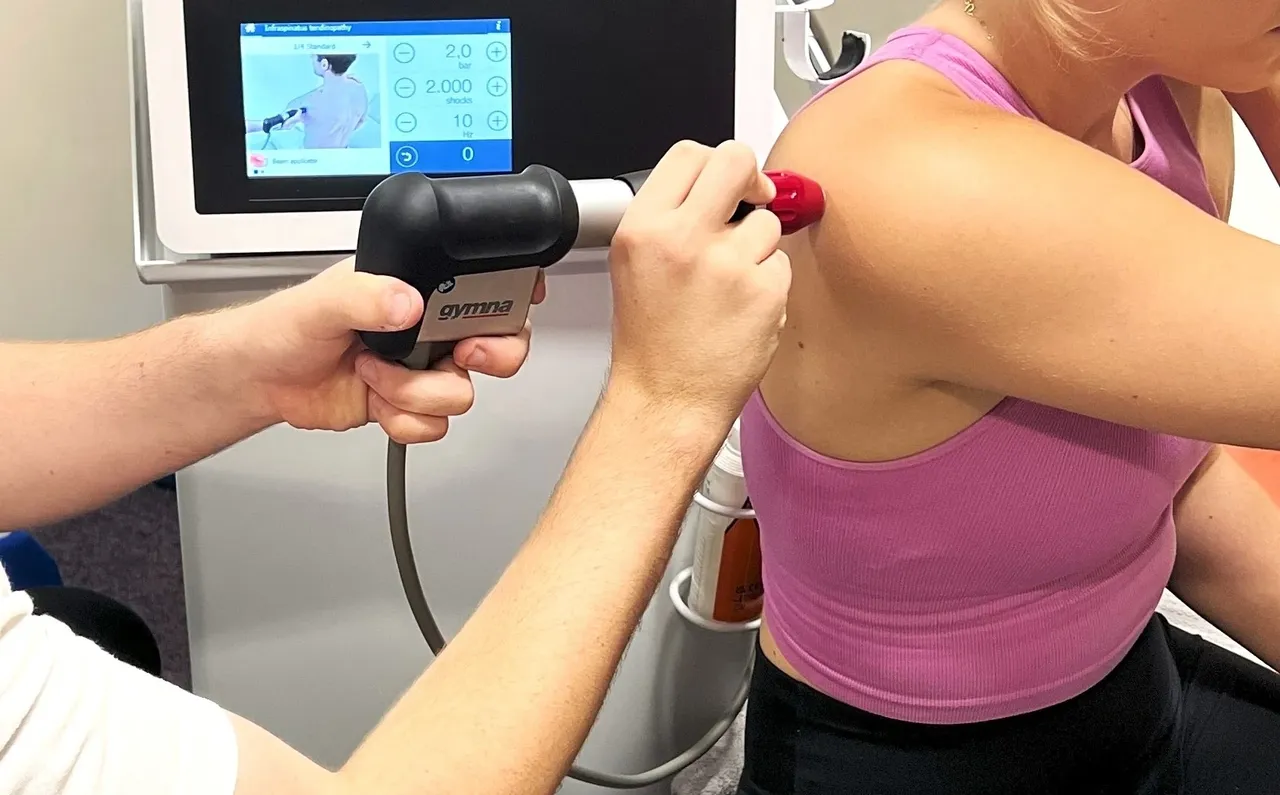Rotator Cuff Tendonitis
Understanding Rotator Cuff Tendonitis of the Shoulder: Causes, Symptoms and Effective Treatments
What is Rotator Cuff Tendonitis?
Rotator cuff tendonitis is a common shoulder condition that involves inflammation or irritation of the tendons in the rotator cuff. The rotator cuff is a group of muscles and tendons that surround the shoulder joint, keeping the head of your upper arm bone firmly within the shallow socket of the shoulder. The supraspinatus muscle is one of the primary muscles affected in this condition. It plays a crucial role in lifting the arm and stabilizing the shoulder.
What Causes Rotator Cuff Tendonitis?
Rotator cuff tendonitis typically develops due to repetitive overhead motions or acute injury. Common causes include:
- Overuse: Repeated overhead activities, such as swimming, tennis, or painting, can strain the tendons.
- Age: Tendons naturally degenerate and become weaker with age, making older individuals more susceptible.
- Poor Posture: Slouching or improper alignment can place undue stress on the shoulder.
- Acute Injury: A sudden injury, such as a fall or lifting something too heavy, can damage the rotator cuff tendons.
Why is the Supraspinatus Tendon most commonly affected?
The supraspinatus muscle runs along the top of your shoulder blade. It’s tendon runs out to the point of your shoulder and it acts to raise the arm out to the side. When the arm is raised to the side the movement can cause the tendon to be pinched up underneath the top of the shoulder socket. This repetitive pinching can irritate the tendon and over time the tendon may become frayed and damaged.


How to Treat Rotator Cuff Tendonitis?
Physiotherapy: The Cornerstone of Treatment for Rotator Cuff Tendonitis
Physiotherapy is an essential part of your recovery from rotator cuff tendonitis. At Activate Physiotherapy, our experienced physiotherapists design personalised rehabilitation programs that include:
- Manual Therapy: Hands-on techniques to improve shoulder mobility and reduce pain.
- Exercise Therapy: Strengthening and stretching exercises tailored to the individual’s needs to eliminate any imbalances leading to the development of shoulder tendonitis, restore shoulder function and prevent recurrence.
Shockwave Therapy
How Shockwave Therapy Works
Shockwave therapy is a non-invasive treatment that uses high-energy sound waves to promote healing and reduce pain. The sound waves are directed at the affected area, where they create microtrauma that stimulates the body’s natural healing processes. This treatment enhances blood circulation, promotes tissue regeneration, and accelerates the healing of tendons.
Benefits of Shockwave Therapy
- Pain Reduction: Shockwave therapy can significantly reduce pain associated with rotator cuff tendonitis by desensitizing nerve endings.
- Improved Blood Flow: The therapy increases blood circulation to the affected area, providing essential nutrients for tissue repair.
- Stimulation of Collagen Production: Shockwave therapy stimulates the production of collagen, which is crucial for the strength and flexibility of tendons.
- Non-Invasive: Unlike surgical options, shockwave therapy is a non-invasive treatment with minimal downtime.
- Quick Treatment Sessions: Each session typically lasts only 10-15 minutes, making it a convenient option for busy individuals.

Exercise Therapy
Targeted exercises are crucial for recovery. These exercises focus on:
- Strengthening the Rotator Cuff: Enhancing the strength and stability of the supraspinatus and other rotator cuff muscles.
- Improving Flexibility: Stretching exercises to increase shoulder mobility and prevent stiffness.
- Postural Correction: Exercises to improve posture and reduce strain on the shoulder.
Additional Treatment Options
Acupuncture & Dry Needling
These techniques involve inserting fine needles into specific points to relieve pain and promote healing. They can help reduce muscle tension and improve blood flow to the affected area.
Instrument Assisted Soft Tissue Mobilization (IASTM)
IASTM uses specialized tools to apply pressure and mobilize soft tissues. It can help break down scar tissue, improve tissue flexibility, and enhance the healing process.
Cupping
Cupping therapy involves placing suction cups on the skin to increase blood flow and reduce muscle tension. It can be effective in relieving pain and promoting recovery.
Should I Have Cortisone?
While cortisone injections are often considered for quick pain relief, they may do more harm than good in the long run. The primary benefits of cortisone are its short-term anti-inflammatory effects. However, cortisone can lead to tissue degradation and weaken the tendons, potentially worsening the condition over time. Additionally, if the underlying causes of rotator cuff tendonitis are not addressed, the pain is likely to return.
Conclusion
Rotator cuff tendonitis, especially involving the supraspinatus muscle, can significantly impact your daily life. Effective treatment involves a combination of physiotherapy, shockwave therapy, and exercise therapy. Additional treatments like acupuncture, IASTM, and cupping can also support recovery. It is essential to approach treatment holistically and avoid relying solely on short-term solutions like cortisone injections. At Activate Physiotherapy, we are committed to providing comprehensive care to help you achieve lasting relief and improved shoulder function.
For more information or to book an appointment, contact us at Activate Physiotherapy in Brisbane. We are here to help you on your journey to recovery!
How to Make an Appointment
Making an appointment to see one of our Physiotherapists is as easy as booking online for your nearest Brisbane based Activate Physiotherapy clinic in Stafford or Tingalpa.
